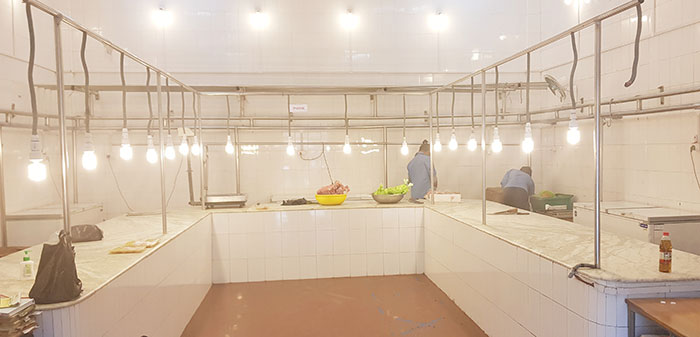Yeshey Lhadon
There is a shortage of meat in the market. If it is available, it is beyond the reach of many. This is because without a body to regulate the price, the market force has made meat expensive.
The price of local beef and pork, today, is Nu 450 and Nu 500 respectively. The price of frozen boneless beef ranges from Nu 370 to Nu 450. Beef with bones is Nu 350, Nu 300 for a kilogram of fish, Nu 250 for a kilogram of chicken, and Nu 700 for mutton.
Some shops don’t have the price display board. In one shop, the old rate board says Nu 250 for beef with bone, 350 for boneless beef, Nu 250 for pork, Nu 280 for fish, Nu 450 for sikkam, Nu 220 for frozen chicken, and Nu 250 for local chicken.
Who is responsible for regulating meat price?
The Bhutan Chambers of Commerce and Industries (BCCI) says while it represents the private sector, it does not fix price. While consumers are of the view that the Office of Consumer Protection (OCP) monitors meat price, officials said that fixing meat price was not their responsibility.
A member of the now defunct Meat Vendors’ Association, Asalman Rai, said they consult the BCCI every year to fix rates in collaboration with the OCP and the department of trade. The meat price was officially last revised in 2017. The association, according to Asalman Rai, wrote several times to BCCI, requesting for price revision including one last year. “They couldn’t take any action,” he said.
Members of the association said that without authorities responding to their requests, vendors started fixing their own price. “Now the meat vendors no longer listen to their Tshogpa,” said Asalman Rai.
Thimphu has 56 meat vendors. Most shops are selling imported fish, frozen beef and packaged chicken. A few shops sell local meat like beef, pork and mutton. Harka Maya, another vendor blames the price on irregular supply. She used to sell boneless beef for Nu 300. It is now Nu 400. She said that the prices supplier charge vendors were high. “We make a profit of Nu 50 a kilogram,” she said.
Another vendor, Sharaj Subba said that he bought pork at Nu 500 per kilogram. He has stopped selling local pork because of the high rate. “I have now begun rearing piglets instead.” Sharaj Subba added that beef prices are high because consumers prefer local beef to frozen beef from India. “We cannot bring down the price,” he said adding that allowing meat-processing facilities would be a sensible approach to address the increasing price.
Meanwhile, consumers keep calling the OCP requesting for intervention.
OCP’s chief programme officer, Jigme Dorji said his office is carrying out a nationwide study on meat prices and factors leading to price rise. He said the OCP collects market price information (MPI) on essential commodities on a daily basis to keep track of price movement in the market. “If any abnormal increase in the prices come to notice, they make necessary interventions,” he said.
“It’s not that we are going to fix the price. We want to make necessary recommendations to relevant stakeholders to address the issue,” said Jigme Dorji.
Jigme Dorji said that fixing prices was impossible. “But when someone is taking advantage of situations such as the current pandemic, cheating consumers through collusions, unfair means, price rigging, exorbitant rates, we intervene to protect the consumers,” he said.
MPI is published for public use so that the consumers can make informed purchases. The MPIs so far have not reflected meat as an essential commodity.


